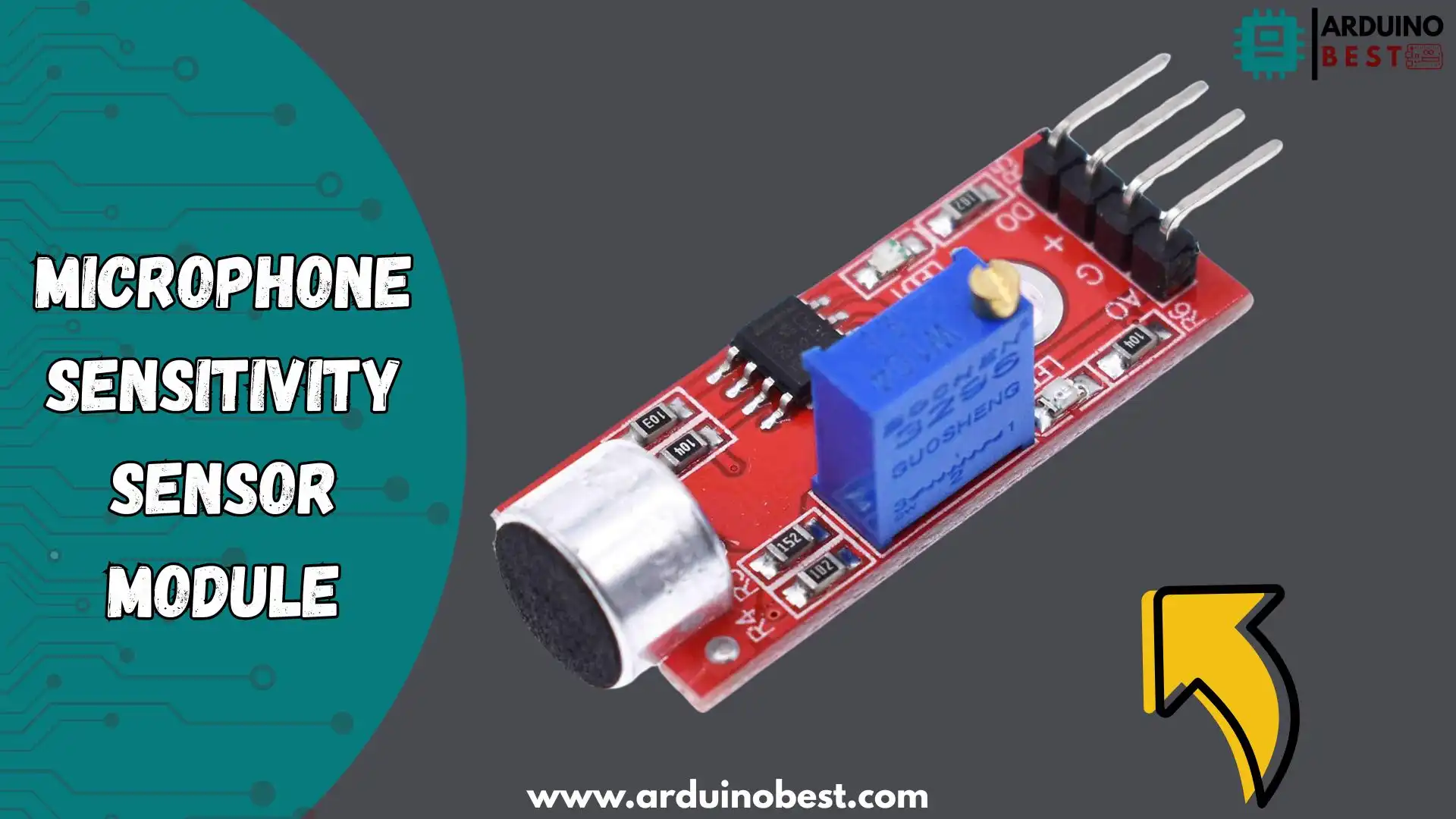Table of Contents
Introduction
Microphone sensitivity sensor modules are crucial components in many modern electronic devices. These sensors play an essential role in detecting sound and converting it into electrical signals, which can be processed for various applications. From smartphones and voice assistants to industrial systems, microphone sensors are at the heart of many devices that rely on audio detection.
The increasing demand for high-performance microphones in consumer electronics, smart home devices, and healthcare solutions makes understanding these modules even more important. In this article, we’ll dive deep into the workings, applications, and selection of microphone sensitivity sensor modules, ensuring you have a thorough understanding of their role in the tech ecosystem.
For more insights on sound detection technologies, check out this article on ScienceDirect.
What is a Microphone Sensitivity Sensor Module?
A microphone sensitivity sensor module is an electronic device that detects sound waves and converts them into electrical signals. These sensors are designed to be sensitive to various sound frequencies and are capable of accurately picking up noise, speech, or other audio signals.
Key Components:
- Microphone: The primary element that picks up sound waves.
- Amplifier: Boosts the electrical signal generated by the microphone.
- ADC (Analog-to-Digital Converter): Converts the analog signal into a digital format for processing by a microcontroller.
Microphone sensitivity sensor modules come in various types such as electret, dynamic, and condenser microphones, each offering different characteristics and uses.
Working Principle
The microphone detects changes in air pressure caused by sound waves, converting these pressure changes into an electrical signal. The sensitivity of the microphone refers to its ability to pick up weak sound signals, which is crucial for applications requiring precise sound detection.
Explore more on microphone technology from IEEE’s article on microphone sensors for IoT.
How Microphone Sensitivity Sensor Modules Work
Microphone sensitivity sensor modules work by capturing sound waves and converting them into electrical signals. Here’s a breakdown of the process:
- Sound Capture: A microphone inside the sensor picks up sound waves (vibrations in the air).
- Signal Conversion: The microphone transduces the sound into an electrical signal.
- Amplification: This signal is often weak, so an amplifier boosts the signal.
- Signal Conversion (ADC): Finally, the analog signal is converted into a digital signal via an ADC, making it ready for processing by a microcontroller or other electronic device.
The sensitivity of the microphone determines how accurately it can detect sounds at different decibel levels. Higher sensitivity means the sensor can detect quieter sounds.
Applications of Microphone Sensitivity Sensor Modules
Microphone sensitivity sensor modules find applications in various fields, from everyday consumer electronics to specialized industrial systems. Here are a few notable uses:
- Consumer Electronics
- Smartphones and Tablets: Microphone modules allow voice recognition and recording features.
- Voice Assistants: Devices like Amazon Alexa and Google Assistant rely on microphones to detect voice commands.
- Headphones and Earbuds: Many have built-in microphones for calls and voice control.
- Automotive Industry
- Noise Detection: Microphone sensors are used in cars to detect engine noise and control systems like automatic volume adjustment.
- Speech Recognition: Allows drivers to use voice commands for hands-free operation of car systems.
- Industrial Applications
- Noise Monitoring: In manufacturing plants or industrial settings, microphone sensors help monitor environmental noise levels.
- Automation Systems: Sound-based triggers in automated systems.
- Healthcare
- Hearing Aids: Microphone sensors are used to amplify sounds and improve hearing.
- Medical Devices: In devices that require sound detection, like stethoscopes for monitoring heartbeats or lung sounds.
- Robotics
- Sound Localization: Robots use microphones to detect and localize sounds, helping them navigate and respond to their environment.
Selecting the Right Microphone Sensitivity Sensor Module
Choosing the right microphone sensor module is crucial for optimizing the performance of your project. Here are some factors to consider:
- Sensitivity: The ability of the sensor to pick up quiet sounds. For example, a microphone with higher sensitivity is ideal for sound detection in low-noise environments.
- Frequency Response: The range of sound frequencies the microphone can detect, which impacts its application in speech, music, or environmental monitoring.
- Signal-to-Noise Ratio (SNR): A higher SNR indicates that the sensor can distinguish sound from background noise more effectively.
- Power Consumption: For battery-powered projects, selecting a low-power microphone sensor is essential to extend battery life.
- Microcontroller Compatibility: Ensure the microphone module works well with the microcontroller you’re using, like Arduino or Raspberry Pi.
Popular sensor models like MAX4466 or Adafruit’s I2S MEMS microphone offer various specifications suited for different applications.
Challenges and Limitations of Microphone Sensitivity Sensors
While microphone sensors are versatile, they come with some limitations that may affect performance:
- Background Noise: The presence of external noise can interfere with sound detection. Advanced signal processing techniques, like noise cancellation, are often used to mitigate this.
- Placement and Orientation: The position of the microphone can affect its sensitivity. It’s important to place it in an area with minimal obstruction for optimal performance.
- Power Consumption: Continuous use of high-sensitivity microphones may drain battery-powered devices quickly.
How to Interface a Microphone Sensitivity Sensor Module with Arduino
Integrating a microphone sensitivity sensor with a microcontroller like Arduino is simple. Here’s how to do it:
Required Components:
- Microphone module (e.g., MAX9814 or INMP441)
- Arduino board (e.g., Arduino Uno)
- Jumper wires
- Breadboard (optional)
Setup:
- Wiring the Microphone Module: Connect the VCC pin to 5V, GND to ground, and the OUT pin to one of the analog input pins on the Arduino.
- Arduino Code: Use Arduino IDE to write code that reads analog values from the microphone and processes the sound data.
cppCopyEditint micPin = A0; // Microphone input pin
int micValue = 0;
void setup() {
Serial.begin(9600);
}
void loop() {
micValue = analogRead(micPin);
Serial.println(micValue); // Print microphone input to serial monitor
delay(100);
}
With this setup, you can monitor sound levels using the serial monitor in the Arduino IDE.
Enhancing Performance with Signal Processing
For more accurate sound detection, especially in noisy environments, you can enhance the performance of the microphone module by employing signal processing techniques:
- Amplification: Using an amplifier to boost weak signals before processing.
- Noise Filtering: Implementing algorithms like Low Pass Filters (LPF) to filter out unwanted frequencies and focus on the desired sound.
- Digital Signal Processing (DSP): Using DSP algorithms to improve sound clarity and reduce errors in data capture.
These enhancements allow the microphone to perform well in challenging conditions, such as loud environments or where sound clarity is critical.
FAQs
- What is the sensitivity of a microphone sensor module?
- Sensitivity refers to the microphone’s ability to detect low-volume sounds. Higher sensitivity enables better sound detection in quiet environments.
- Can a microphone sensitivity sensor module detect low-frequency sounds?
- Yes, depending on the sensor’s frequency response, it can detect a wide range of frequencies, including low-frequency sounds like bass.
- What are the best applications for microphone sensitivity sensor modules?
- These sensors are widely used in voice recognition, noise monitoring, automotive applications, and healthcare devices.
- Can I use these sensors with a Raspberry Pi?
- Yes, many microphone modules are compatible with Raspberry Pi for projects involving audio detection or voice recognition.
- How do I improve the accuracy of microphone sensors in noisy environments?
- Using noise filtering and signal amplification techniques can significantly improve accuracy in noisy settings.
Future Trends in Microphone Sensitivity Sensor Technology
As technology advances, microphone sensitivity sensor modules are becoming more powerful and versatile. Future developments include:
- AI Integration: AI-driven sound recognition algorithms that allow sensors to detect specific sounds with higher accuracy.
- Wireless Microphone Sensors: Microphone modules that communicate wirelessly with devices for better integration in IoT systems.
- High-Sensitivity MEMS Microphones: The use of MEMS technology to create even more sensitive, compact, and reliable microphones.
Conclusion
In conclusion, microphone sensitivity sensor modules are integral to the development of modern audio-based technologies. These modules play a pivotal role in applications like voice recognition, sound localization, and noise monitoring, making them indispensable in industries such as consumer electronics, healthcare, and robotics. Their ability to detect and process sound with high accuracy enhances the capabilities of systems that require sound input.
Understanding the underlying working principles of these modules, selecting the appropriate type based on your project needs, and optimizing their performance can significantly improve your project outcomes. As technology advances, the precision and versatility of these sensors will continue to improve, making them even more valuable for developers and engineers.
By integrating microphone sensitivity sensors effectively, you can unlock the full potential of sound-related functionalities in a variety of use cases. Whether you’re building smart home systems, wearable health devices, or autonomous robots, these sensors offer powerful, reliable solutions for sound detection and analysis. Their ongoing development ensures that they will remain essential tools in the ever-evolving world of audio technology.
Arduino Projects:
1- Complete Guide for DHT11/DHT22 Humidity and Temperature Sensor With Arduino
2- DHT11 – Temperature and Humidity Sensor
3- DHT22 – Temperature and Humidity Sensor (more accurate than DHT11)
4- BMP180 – Barometric Pressure and Altitude Sensor
5- BMP280 – Barometric Pressure & Temperature Sensor
6- BME280 – Temperature, Humidity, and Pressure Sensor
7- Arduino Flex Sensor Controlled Robot Hand
8- Arduino ECG Heart Rate Monitor AD8232 Demo
9- Arduino NRF24L01 Wireless Joystick Robot Car
10- Arduino Force Sensor Anti-Theft Alarm System
11- Arduino NRF24L01 Transceiver Controlled Relay Light
12- Arduino Rotary Encoder Controlled LEDs: A Complete Guide

